
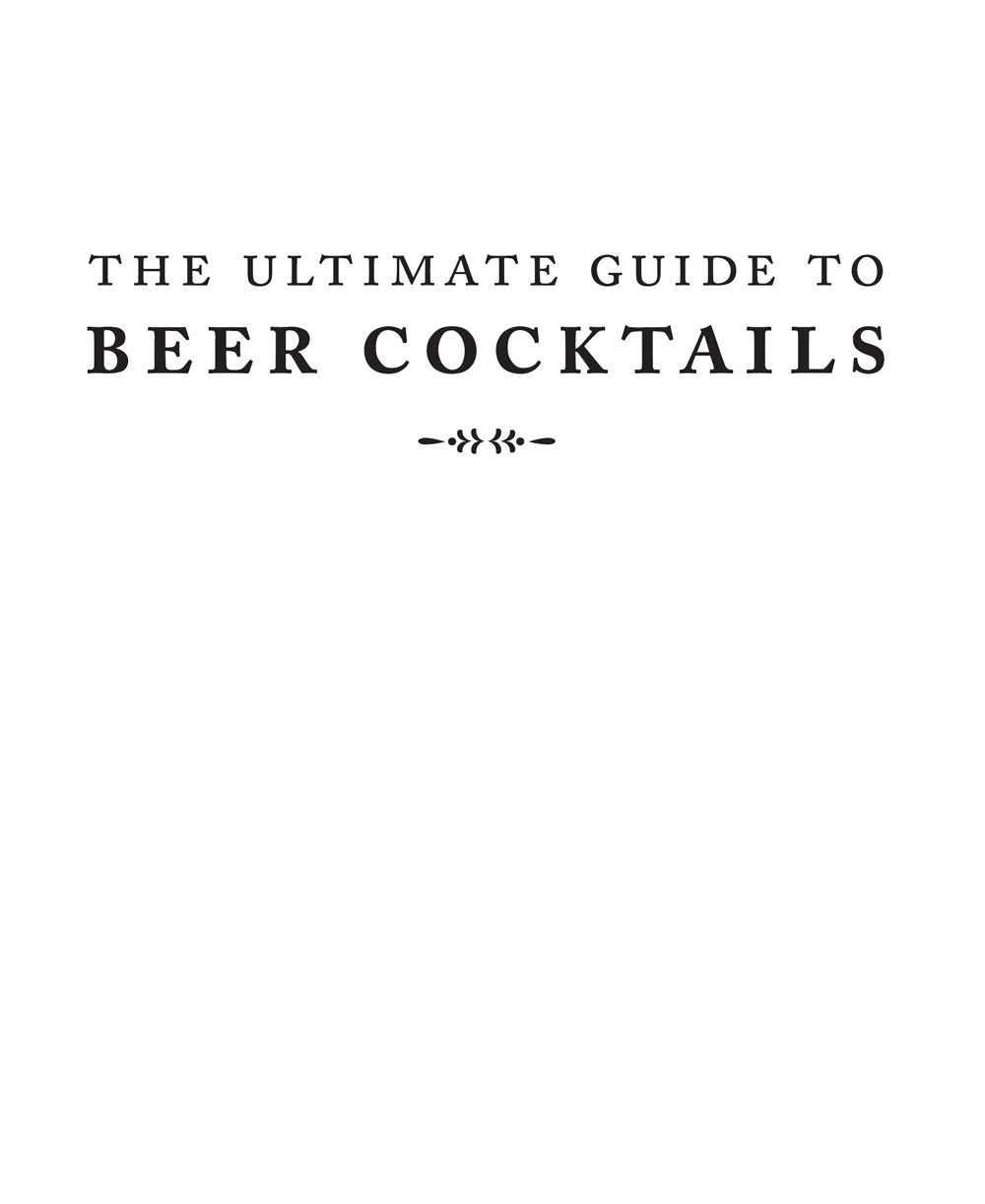
 Copyright 2018 by Jon & Lindsay Yeager Photographs copyright 2018 by Laurie Dicus All rights reserved. No part of this book may be reproduced in any manner without the express written consent of the publisher, except in the case of brief excerpts in critical reviews or articles. All inquiries should be addressed to Skyhorse Publishing, 307 West 36th Street, 11th Floor, New York, NY 10018. Skyhorse Publishing books may be purchased in bulk at special discounts for sales promotion, corporate gifts, fund-raising, or educational purposes. Special editions can also be created to specifications. For details, contact the Special Sales Department, Skyhorse Publishing, 307 West 36th Street, 11th Floor, New York, NY 10018 or .
Copyright 2018 by Jon & Lindsay Yeager Photographs copyright 2018 by Laurie Dicus All rights reserved. No part of this book may be reproduced in any manner without the express written consent of the publisher, except in the case of brief excerpts in critical reviews or articles. All inquiries should be addressed to Skyhorse Publishing, 307 West 36th Street, 11th Floor, New York, NY 10018. Skyhorse Publishing books may be purchased in bulk at special discounts for sales promotion, corporate gifts, fund-raising, or educational purposes. Special editions can also be created to specifications. For details, contact the Special Sales Department, Skyhorse Publishing, 307 West 36th Street, 11th Floor, New York, NY 10018 or .
Skyhorse and Skyhorse Publishing are registered trademarks of Skyhorse Publishing, Inc., a Delaware corporation. Visit our website at www.skyhorsepublishing.com. 10 9 8 7 6 5 4 3 2 1 Library of Congress Cataloging-in-Publication Data is available on file. Cover design by Mona Lin Cover photograph by Laurie Dicus Print ISBN: 978-1-5107-2921-6 Ebook ISBN: 978-1-5107-2925-4 Printed in China Contents Introduction Beer-cocktails. Sounds a little funny, right? What many bartenders across the globe are trying to perfect is still a little foreign to most imbibers. Many people know the joys, and the woes, of the venerable Margarona, or Coronita, or Beergarita, depending on where youre from.
Its the classic Margarita with a Corona injected right into the middle. Whether frozen or on the rocks, the upside-down glass bottle rising from what is often a much too sweet cocktail is a simple mans pleasure. Its available at basically every Mexican restaurant and it definitely does the trick. Beyond that though, the marriage of brew and booze is a path less traveled. The tastemakers of todays craft cocktail community take this offshoot of cocktail history pretty seriously, and weve tasted a number of wonderful beer cocktails in our travels. The problem is, that beyond the cocktail elite, this art form of spirits and suds isnt experimented with much and we think that should change.
We hope this book can be an inspiration to flavor and technique. Considering this beverage genre has basically no boundaries, we hope that these recipes might serve as a resource to think outside the box the next time you go shake something up. We dont know much, and theres been much trial and error, but as full-time consultants, we hope to share some of our successes with you. Hopefully, this book can open a door for you into how we interpret what a cocktail can be. To make sure were speaking the same language though, a brief history... History B EER The marriage of beer and other ingredients has a long historylonger than one might expect.
For example, there was the discovery of what could be the first paycheck from 5,000 BC. Found in the ancient city of Uruk (in todays Iraq), we see an inscription in which a laborer was compensated with fermented beverages depending on his days work. We cant judge, we have those days, too. Then theres the Code of Hammurabi. Hammurabi was the sixth king of Babylon and, as it stands, sort of led the way for the idea of governing law and having something like a constitution in place. In this code, which was chiseled in stone much like the Ten Commandments, we see all the makings of a well-oiled civilization.
There are laws for landowners, violence, theft, and even laws for divorce. But, this hand-carved set of rules also dealt with the growing and harvesting of grain for the sake of beverages. Further, there are laws on the beverages sales and distribution. Through this code, historians have put together that these ancient Babylonians had beer halls, run by women (as there were probably other activities happening behind closed doors), and these women had a pretty strict time running these businesses. The downside was if they slipped up, theyd be burned at the stake or drowned. The upside? Most possibly the advent of the local bar, and we all know thats good news.
Through all this though, theres one document in particular that sticks out. Though we have evidence of humans producing alcohol and how important that alcohol was to them and their economy, this document not only spells out the recipe but really starts to peek inside the culinary mindset of the day. The story goes that ancient Sumerians had a goddess of brewing named Ninkasi. Some fella, or lady, wrote a poem to the goddess which documented the process in which they produced this yet-to-be-defined beverage. Coming to us on two clay tablets from 1800 BC, the Hymn of Ninkasi stands as the first archeological evidence for a barley-based beer. And though this is the style we are used to today, the use of ingredients outside traditional grains, water, and yeast are inspiring for the cocktail-minded.
The poem was translated out of the University of Chicago and put into the hands of Fritz Maytag, founder of Anchor Brewing in San Francisco. They replicated the recipe from the direct translation and presented their results at the annual meeting of the American Association of Microbrews in 1991. Miguel Civil, the leading translator, wrote, we were able to taste Ninkasi Beer, sipping it from large jugs with drinking straws as they did four millennia ago. The beer had an alcohol concentration of 3.5%, very similar to modern beers, and had a dry taste lacking in bitterness, similar to hard apple cider. The first part of the longer poem reads as follows: Borne of the flowing water, Tenderly cared for by the Ninhursag, Borne of the flowing water, Tenderly cared for by the Ninhursag, Having founded your town by the sacred lake, She finished its great walls for you, Ninkasi, having founded your town by the sacred lake, She finished its walls for you, Your father is Enki, Lord Nidimmud, Your mother is Ninti, the queen of the sacred lake. Ninkasi, your father is Enki, Lord Nidimmud, Your mother is Ninti, the queen of the sacred lake.
You are the one who handles the dough [and] with a big shovel, Mixing in a pit, the bappir with sweet aromatics, Ninkasi, you are the one who handles the dough [and] with a big shovel, Mixing in a pit, the bappir with [date] honey, You are the one who bakes the bappir in the big oven, Puts in order the piles of hulled grains, Ninkasi, you are the one who bakes the bappir in the big oven, Puts in order the piles of hulled grains, You are the one who waters the malt set on the ground, The noble dogs keep away even the potentates, Ninkasi, you are the one who waters the malt set on the ground, The noble dogs keep away even the potentates, You are the one who soaks the malt in a jar, The waves rise, the waves fall. Ninkasi, you are the one who soaks the malt in a jar, The waves rise, the waves fall. You are the one who spreads the cooked mash on large reed mats, Coolness overcomes, Ninkasi, you are the one who spreads the cooked mash on large reed mats, Coolness overcomes, You are the one who holds with both hands the great sweet wort, Brewing [it] with honey [and] wine (You the sweet wort to the vessel) Ninkasi, (...)(You the sweet wort to the vessel) The filtering vat, which makes a pleasant sound, You place appropriately on a large collector vat. Ninkasi, the filtering vat, which makes a pleasant sound, You place appropriately on a large collector vat. When you pour out the filtered beer of the collector vat, It is [like] the onrush of Tigris and Euphrates. Ninkasi, you are the one who pours out the filtered beer of the collector vat, It is [like] the onrush of Tigris and Euphrates.
Next page

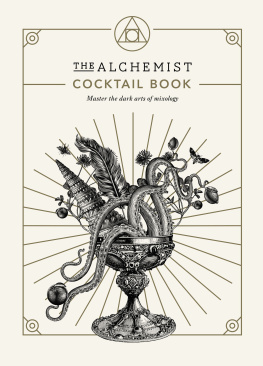


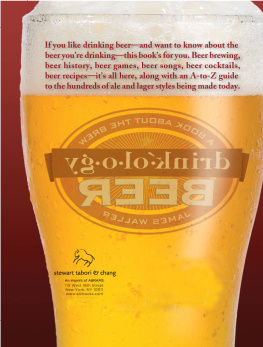

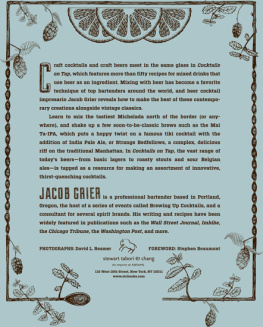
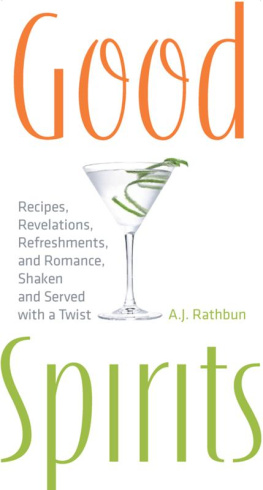
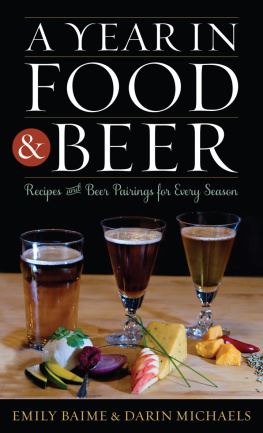


 Copyright 2018 by Jon & Lindsay Yeager Photographs copyright 2018 by Laurie Dicus All rights reserved. No part of this book may be reproduced in any manner without the express written consent of the publisher, except in the case of brief excerpts in critical reviews or articles. All inquiries should be addressed to Skyhorse Publishing, 307 West 36th Street, 11th Floor, New York, NY 10018. Skyhorse Publishing books may be purchased in bulk at special discounts for sales promotion, corporate gifts, fund-raising, or educational purposes. Special editions can also be created to specifications. For details, contact the Special Sales Department, Skyhorse Publishing, 307 West 36th Street, 11th Floor, New York, NY 10018 or .
Copyright 2018 by Jon & Lindsay Yeager Photographs copyright 2018 by Laurie Dicus All rights reserved. No part of this book may be reproduced in any manner without the express written consent of the publisher, except in the case of brief excerpts in critical reviews or articles. All inquiries should be addressed to Skyhorse Publishing, 307 West 36th Street, 11th Floor, New York, NY 10018. Skyhorse Publishing books may be purchased in bulk at special discounts for sales promotion, corporate gifts, fund-raising, or educational purposes. Special editions can also be created to specifications. For details, contact the Special Sales Department, Skyhorse Publishing, 307 West 36th Street, 11th Floor, New York, NY 10018 or .